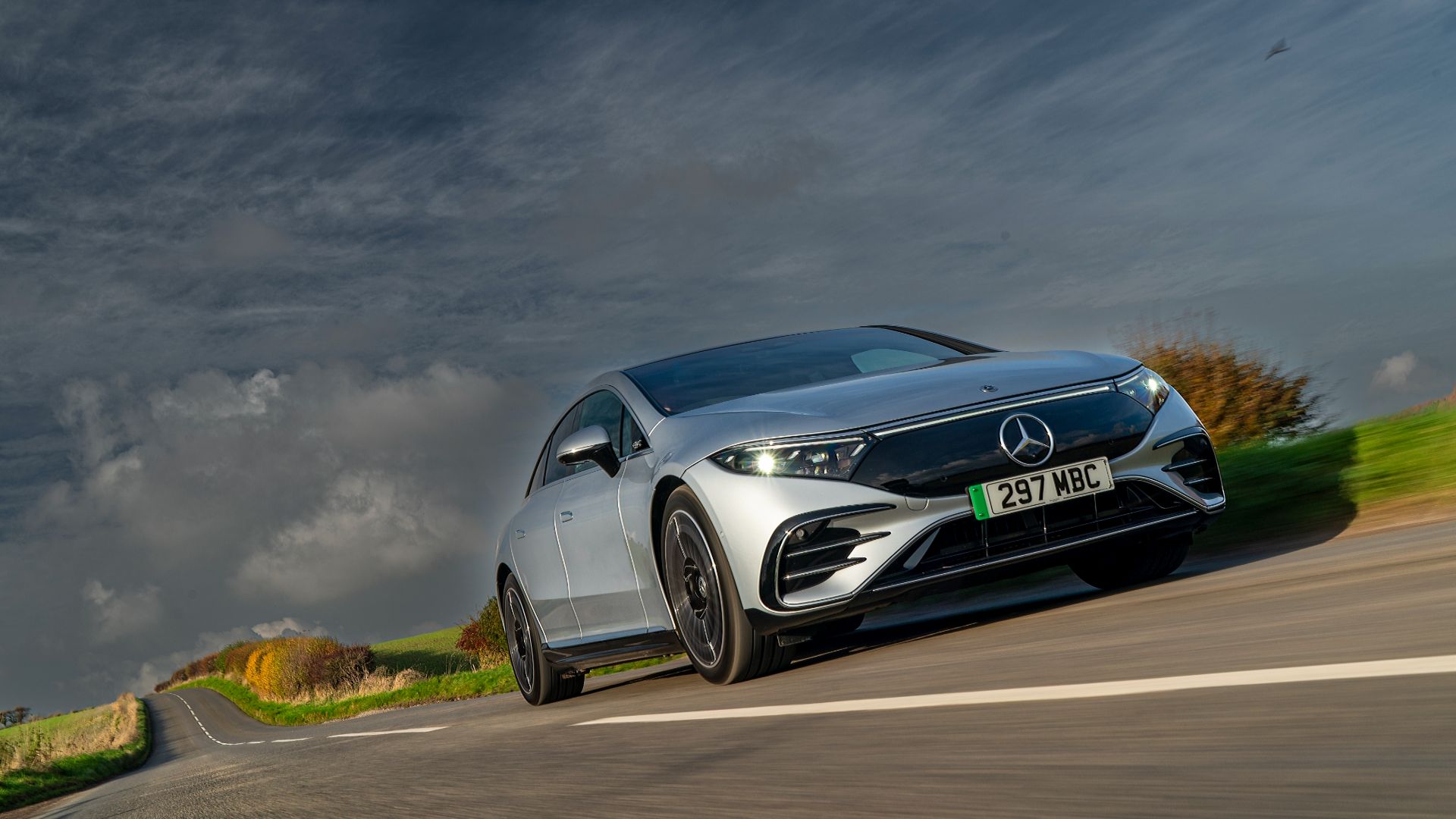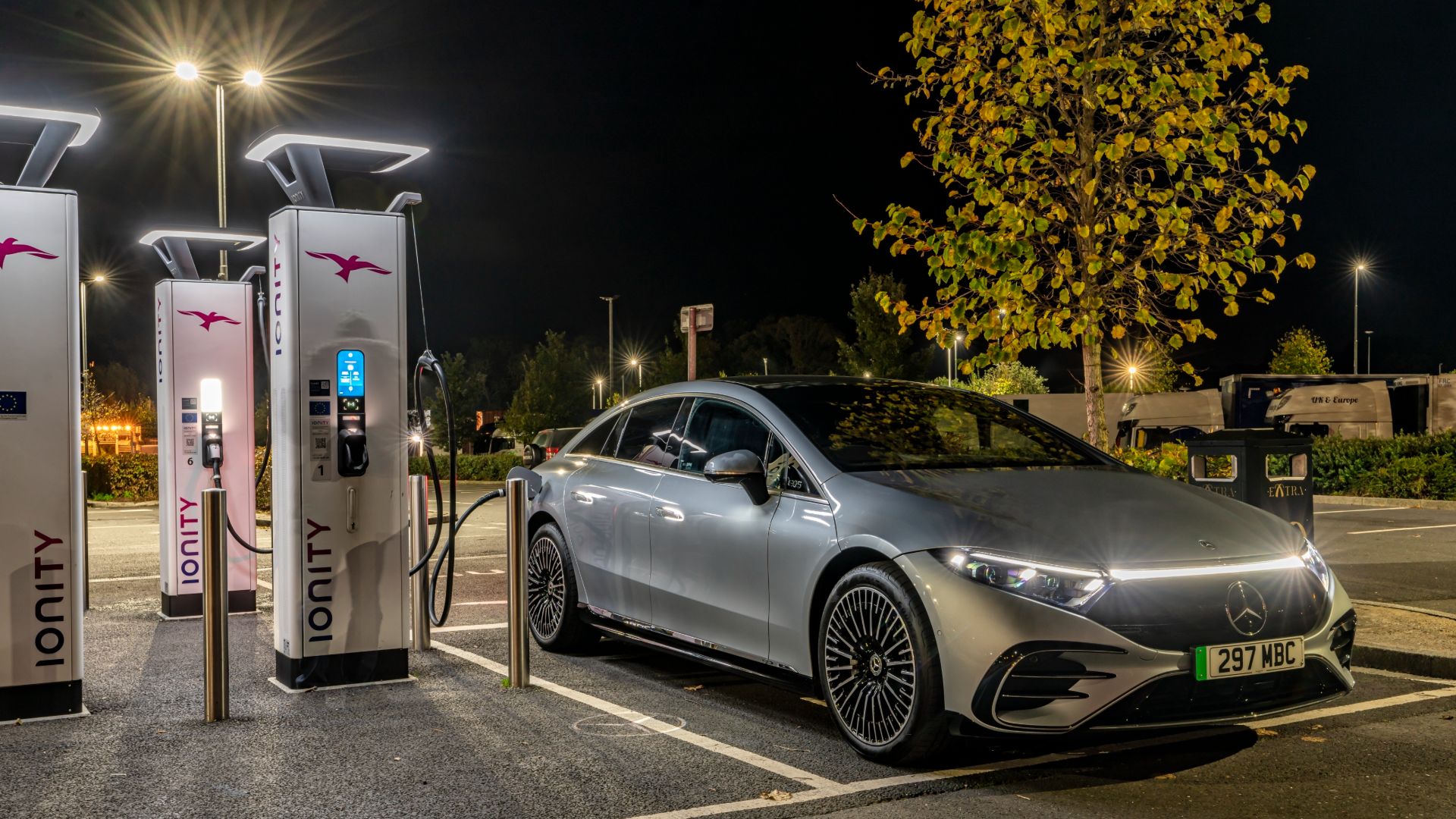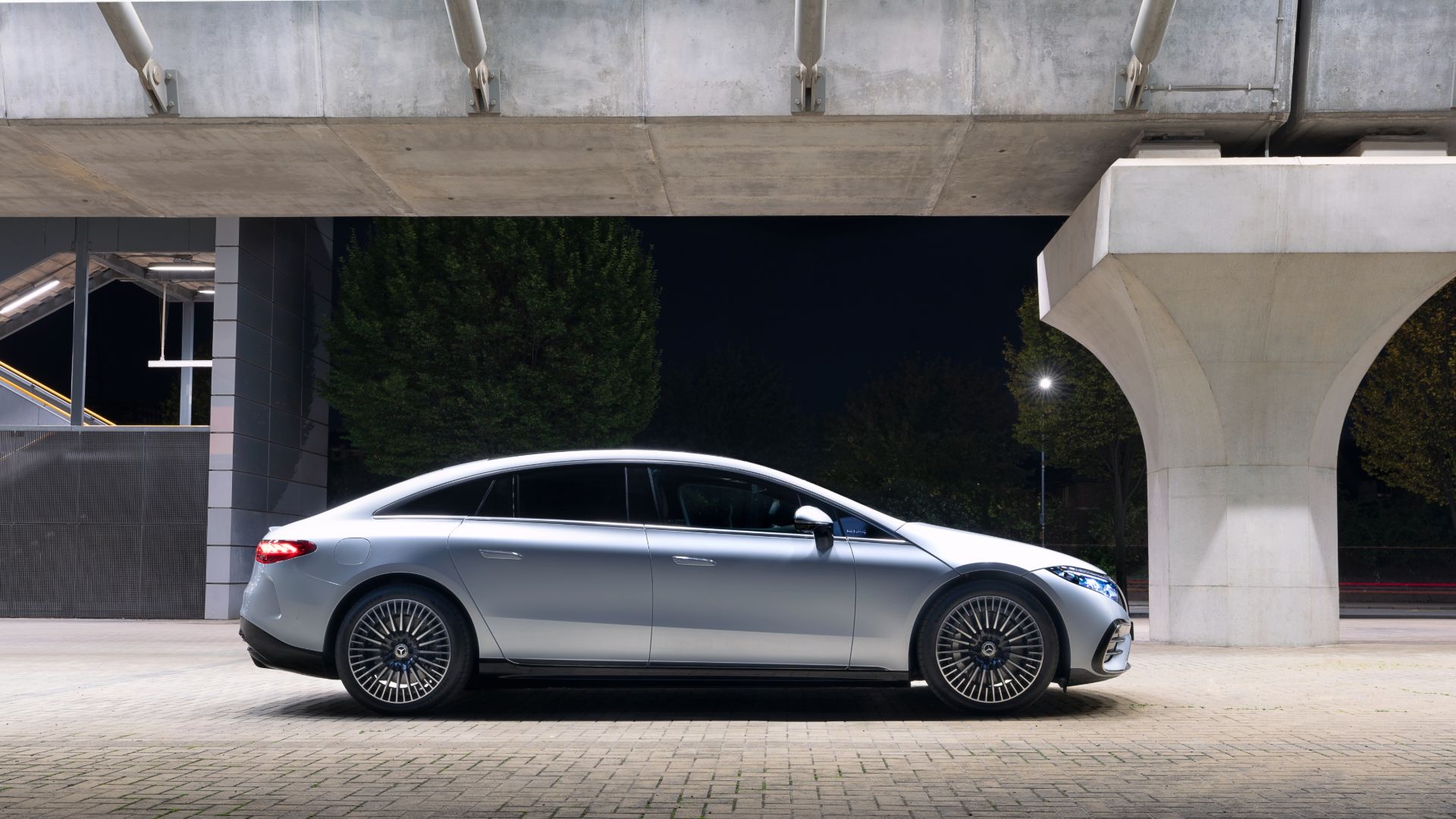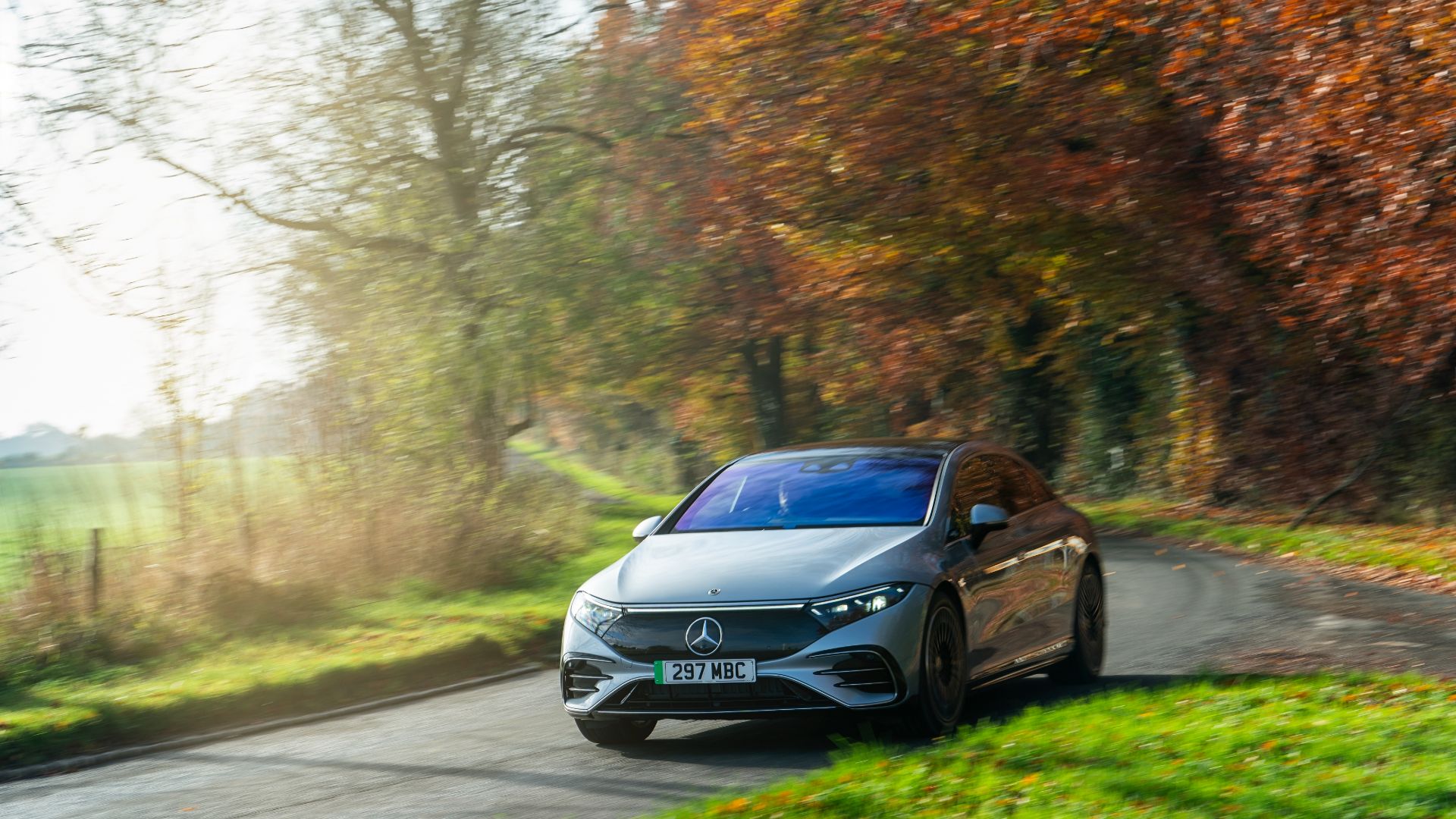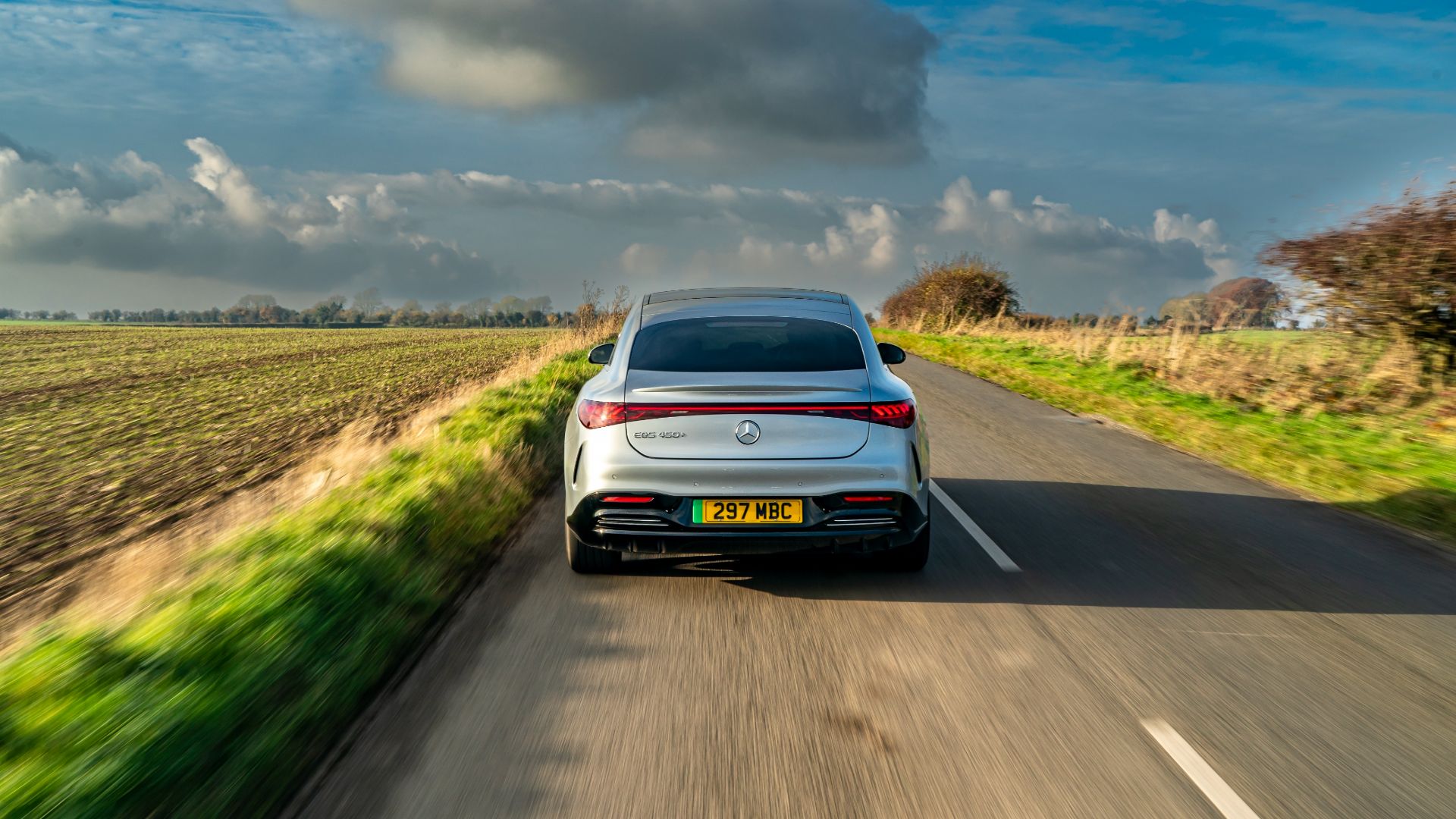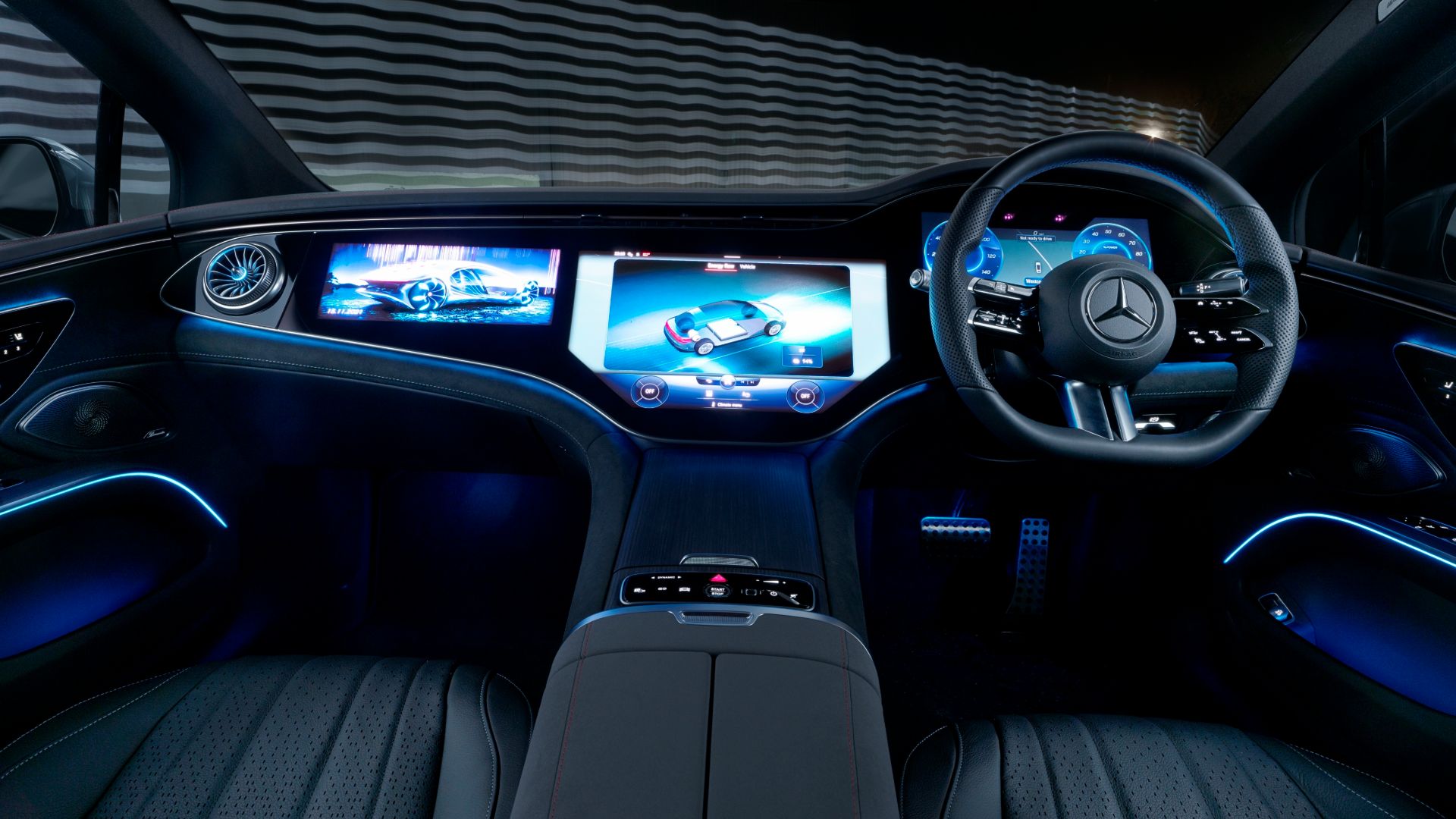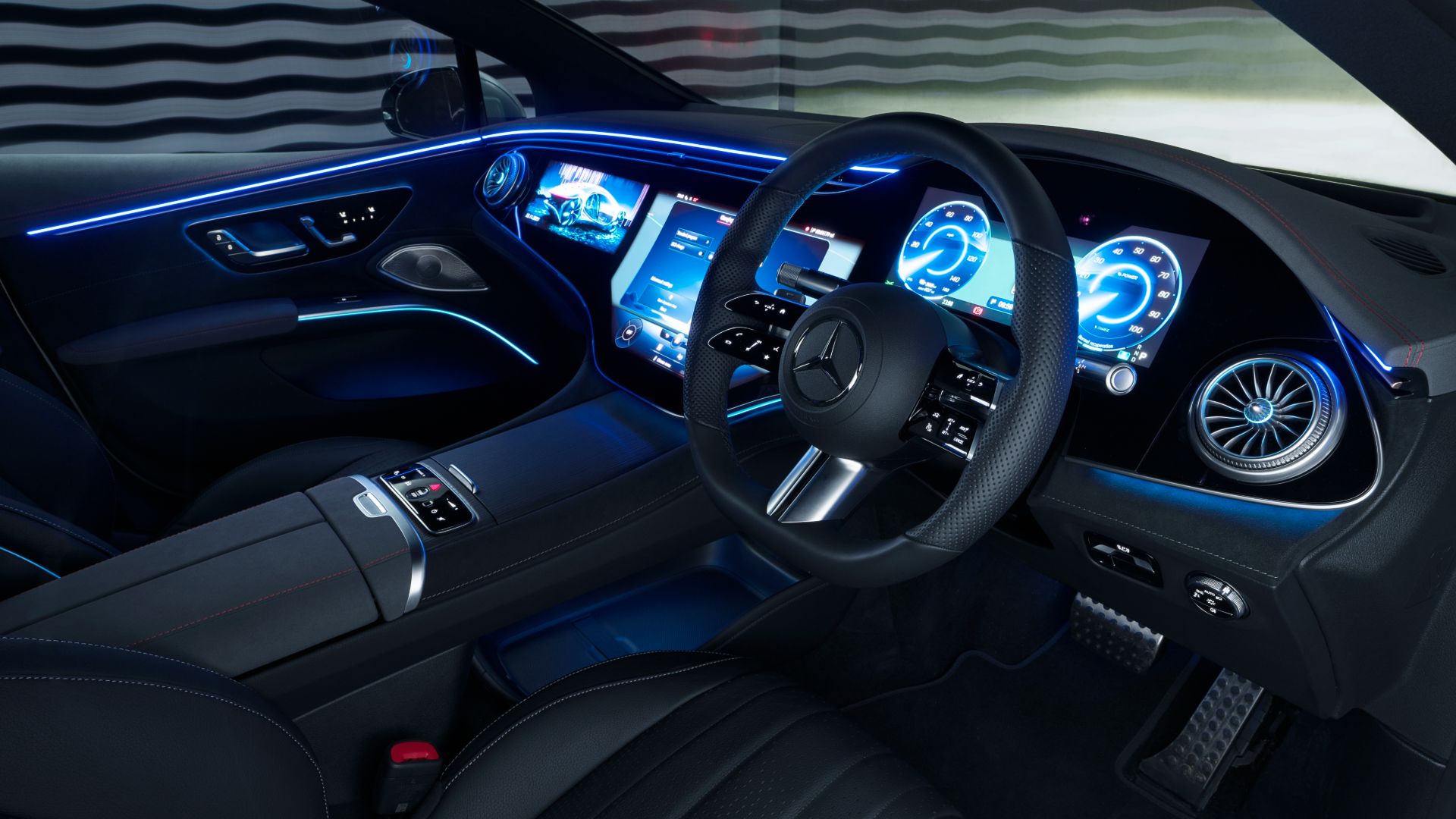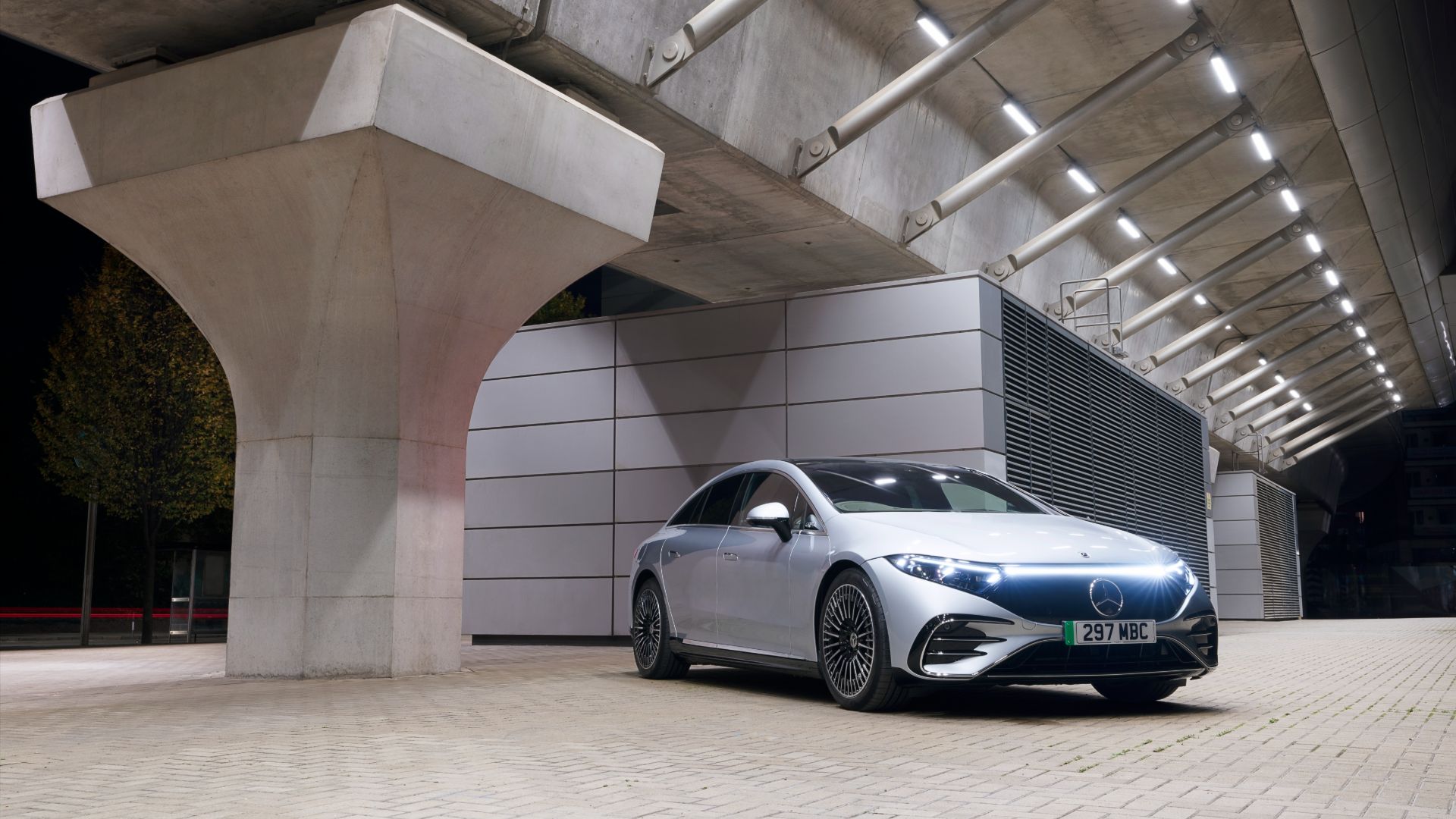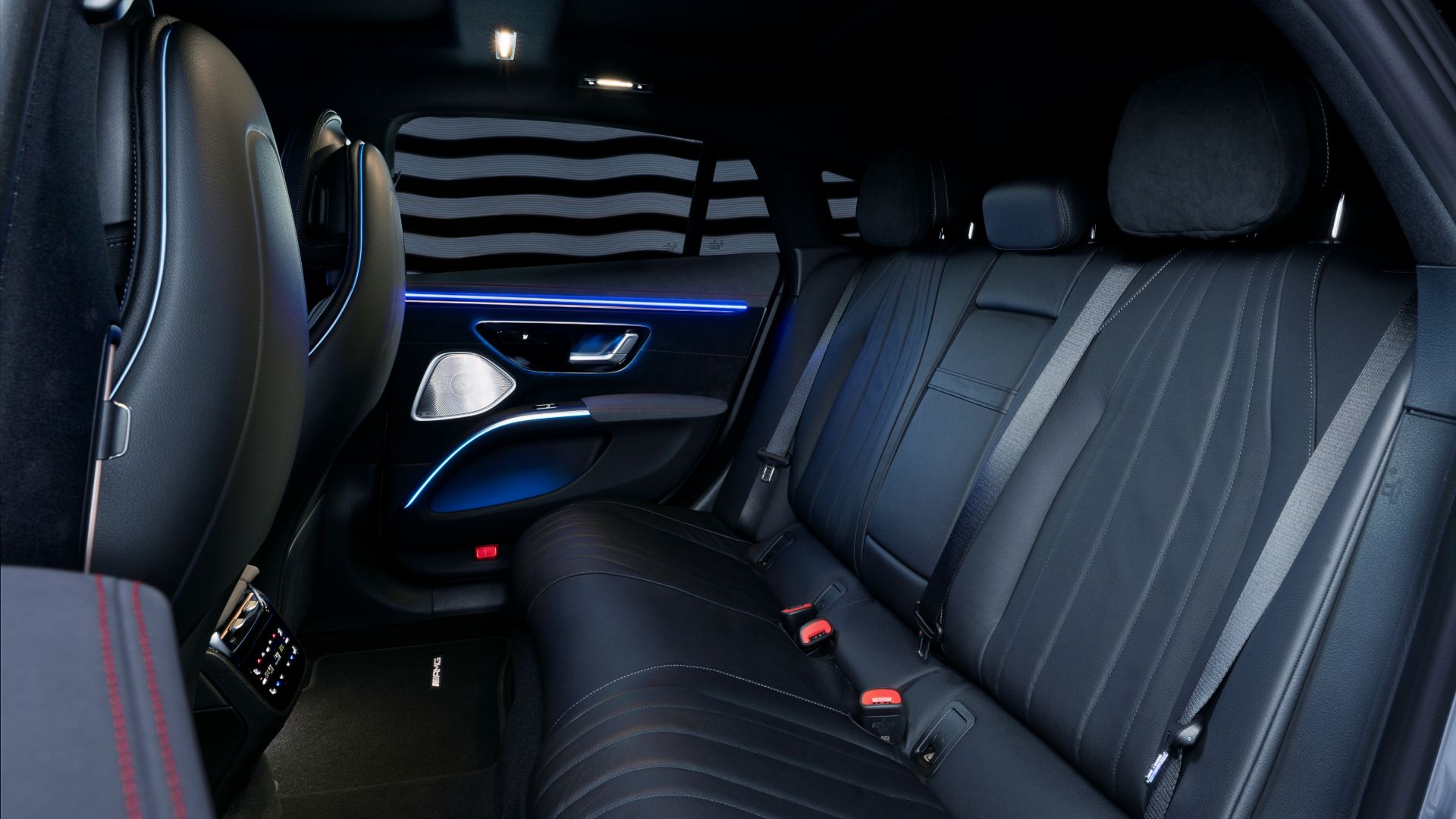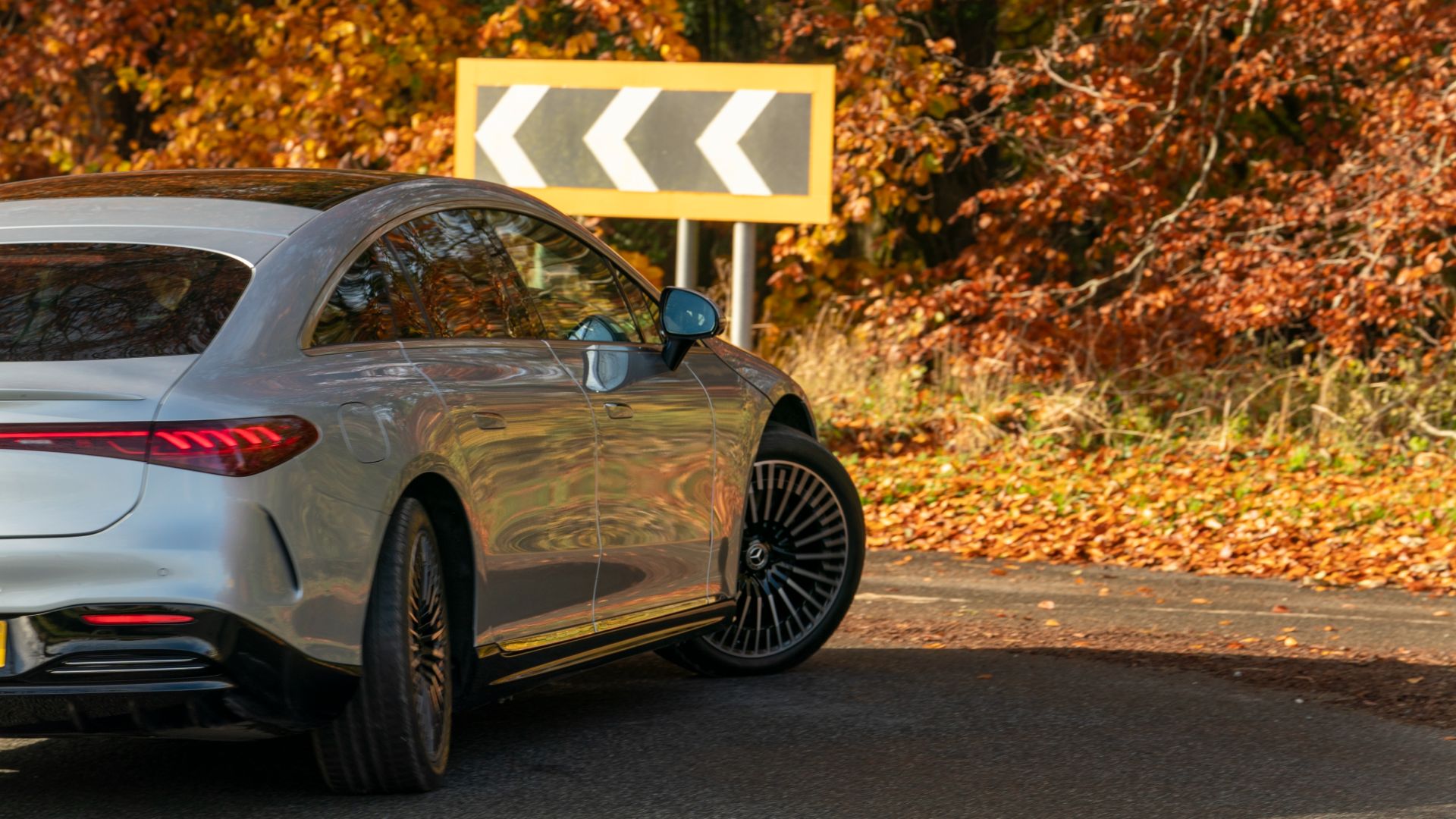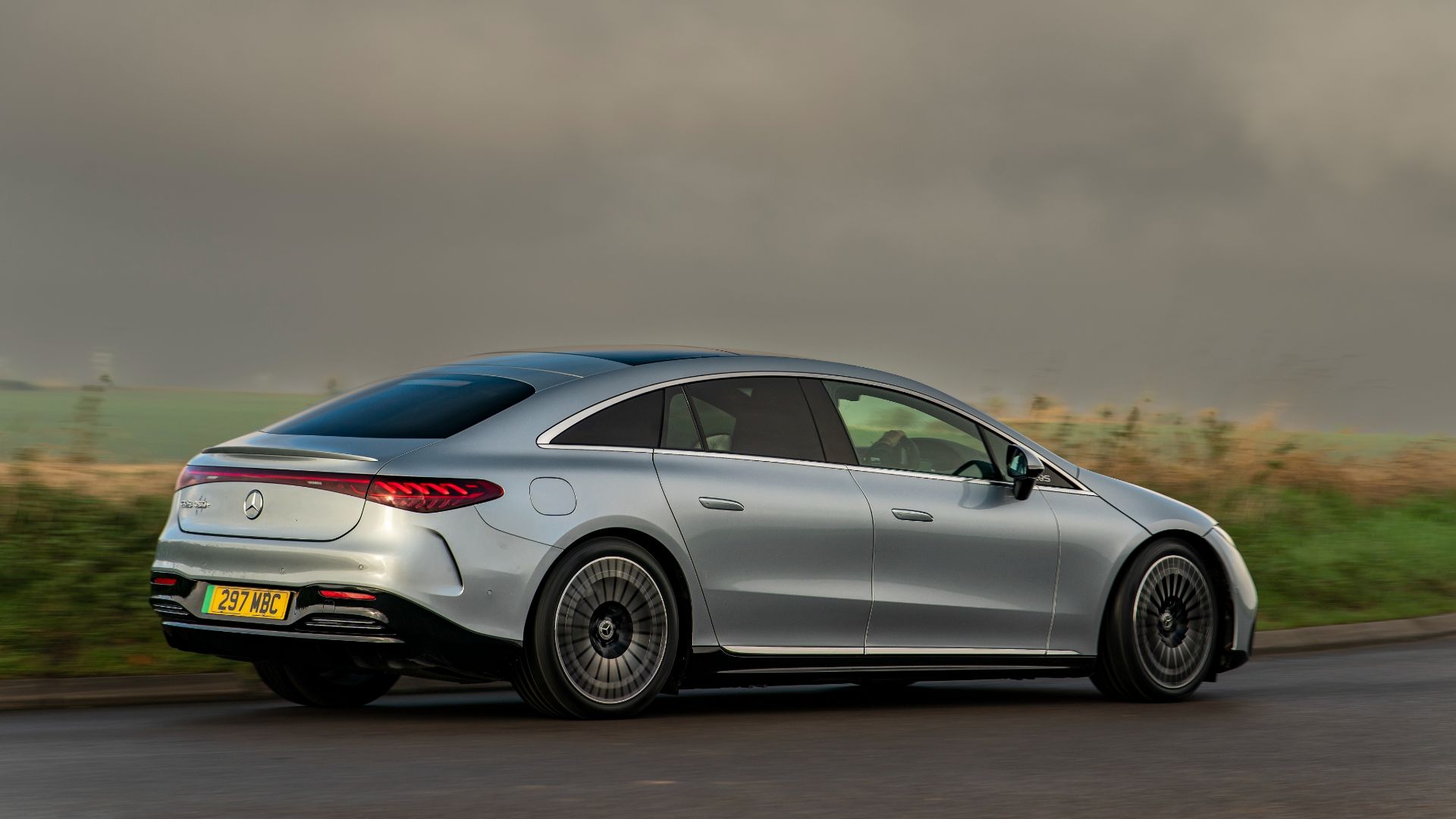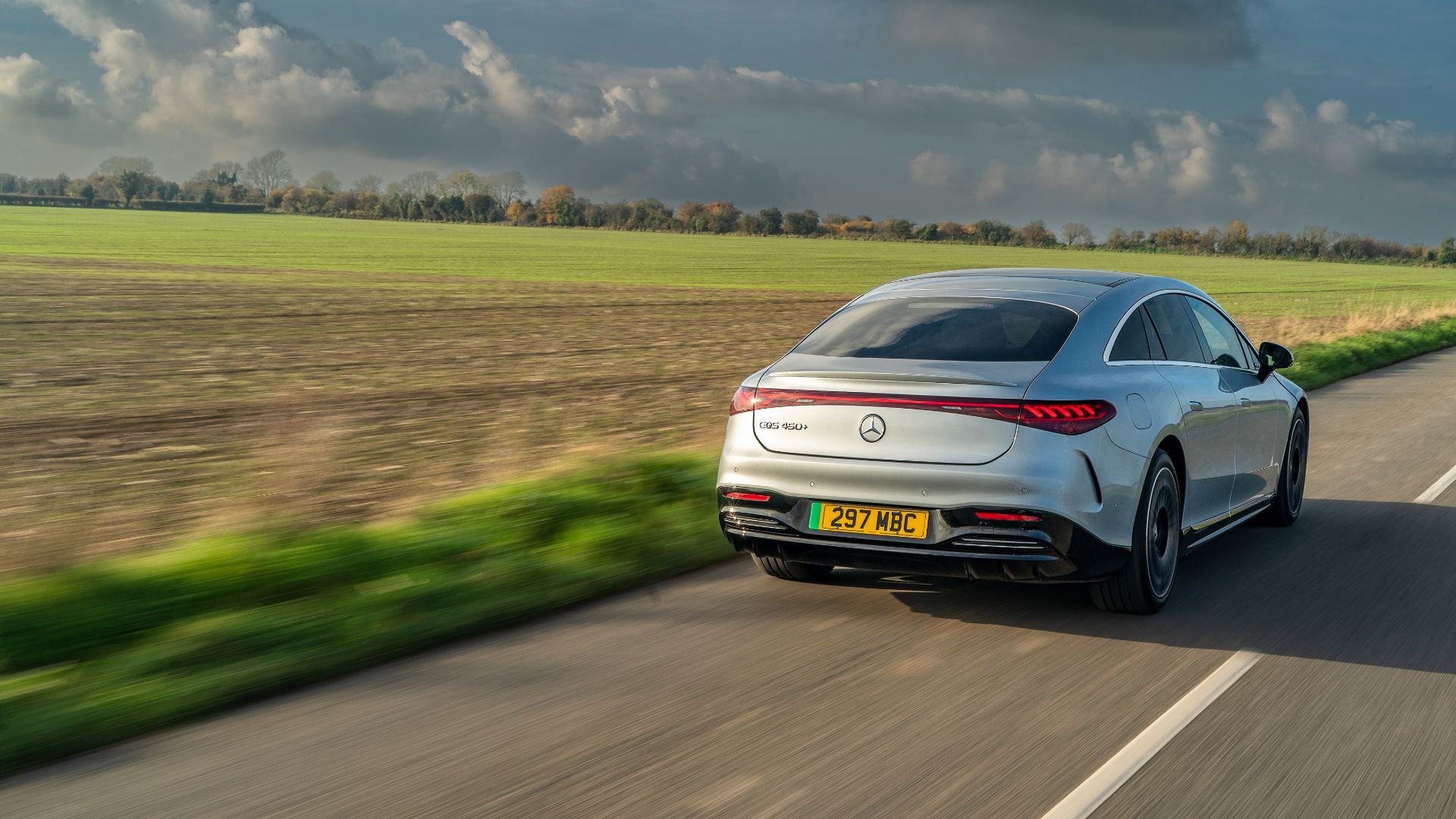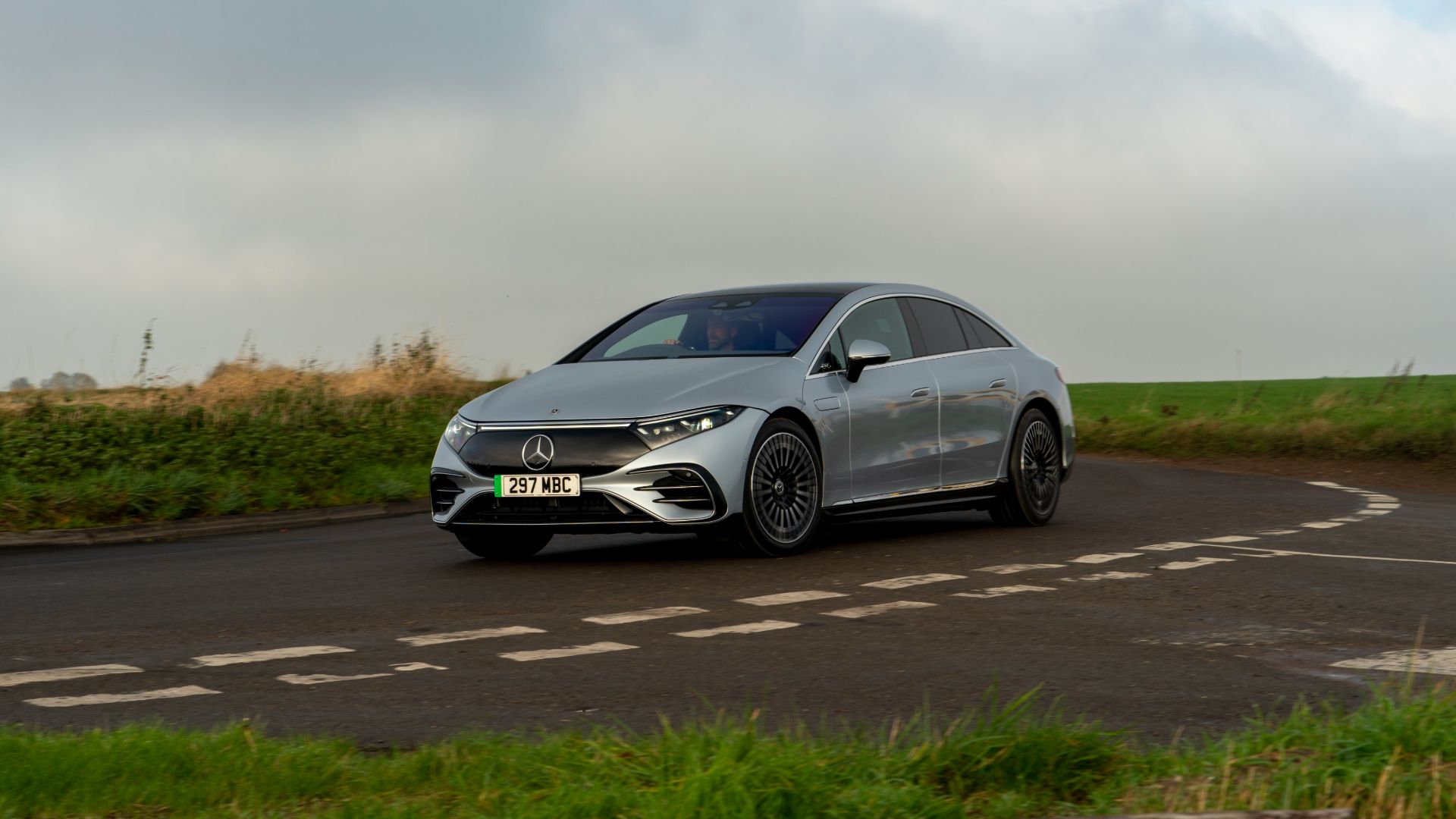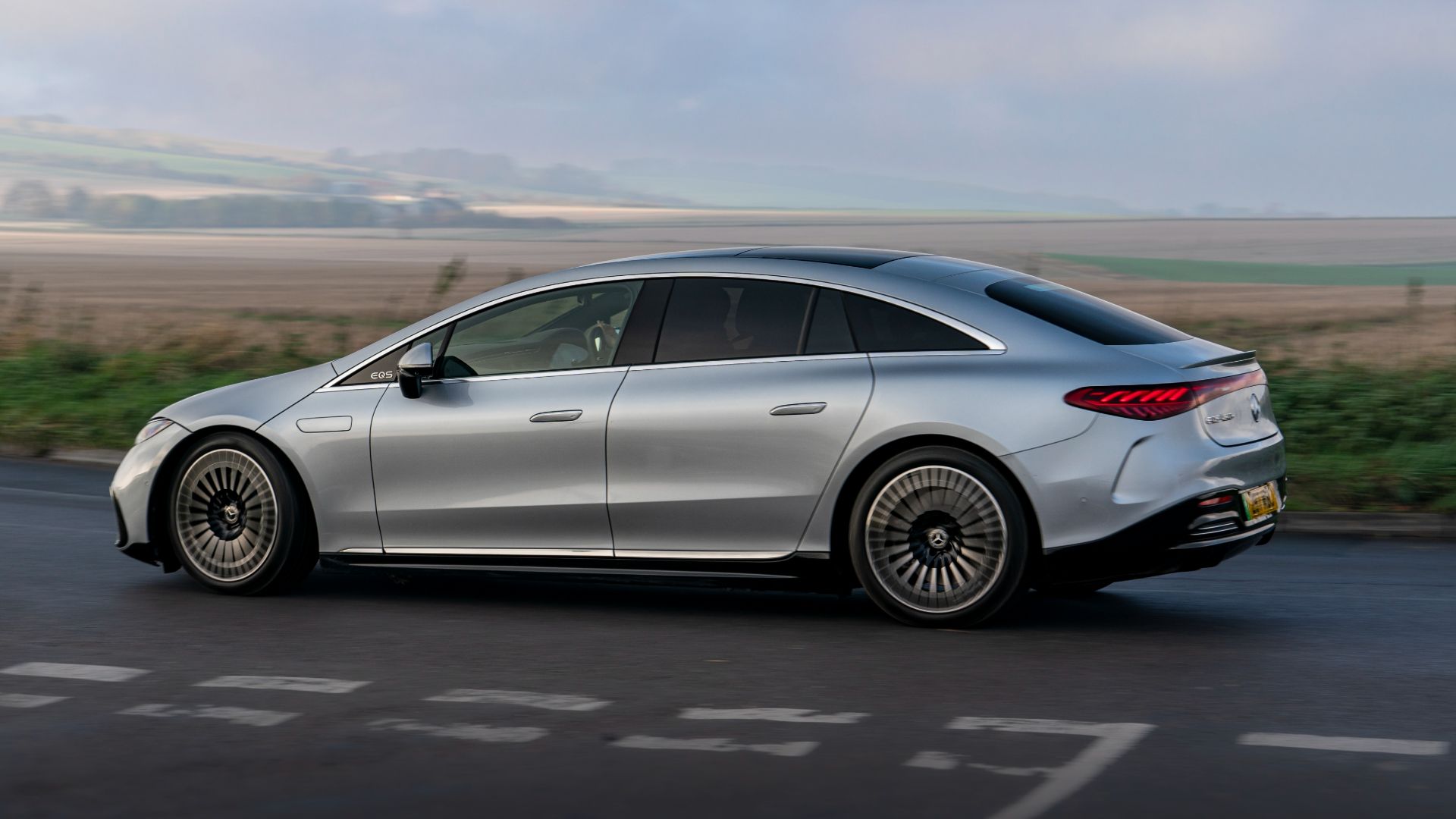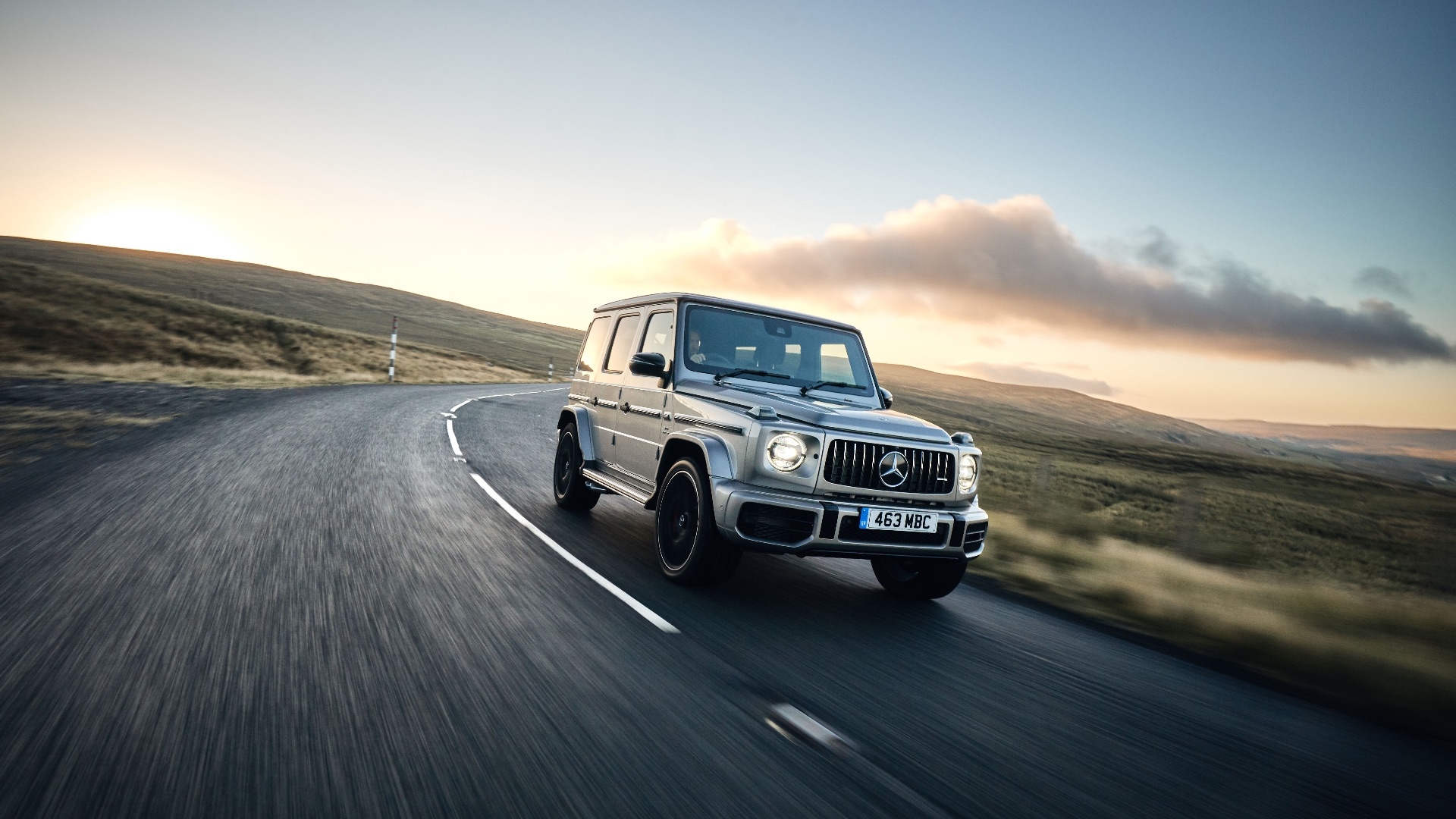While upstart Tesla blazed a trail, the world’s oldest car company (est. 1888) has been slow to embrace electrification. But now Mercedes-Benz is jumping in with both feet.
The EQS is Stuttgart’s first bespoke EV – and a powerful statement of intent. The electric alternative to an S-Class, it features a mammoth 107.8kWh battery (a standard Nissan Leaf musters just 40kWh) and a range of up to 453 miles.
I sampled the rear-driven 333hp EQS 450+, which hauls its 2.5-tonne kerb weight to 62mph in 6.3sec and costs £106,995 in full-house Luxury spec. Further up the range are the twin-motor 523hp EQS 580 4Matic and excess-all-areas AMG EQS 53, the latter with up to 761hp for 0-62mph in 3.4sec.
An aerodynamic champion
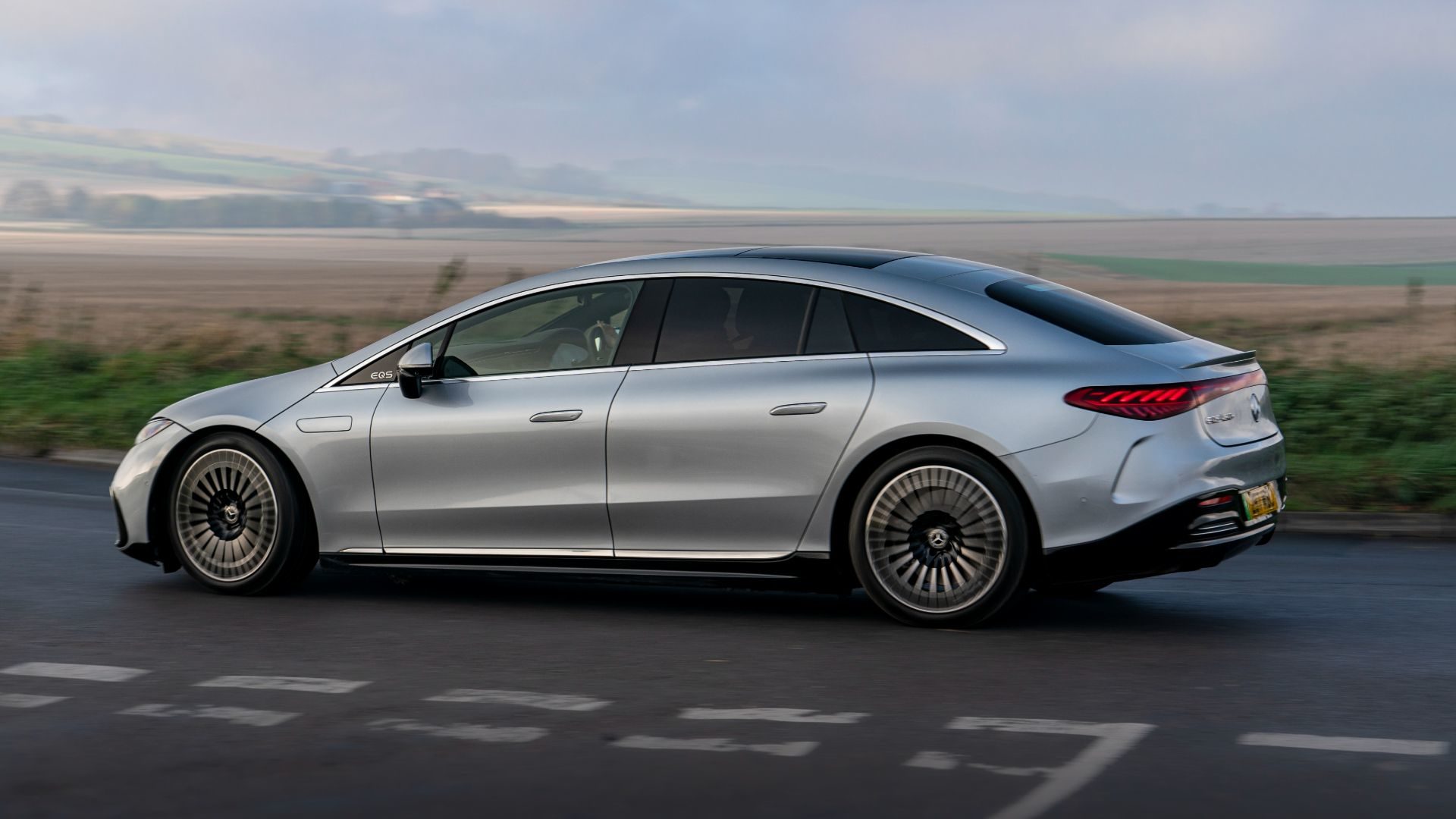
Find a 350kW public charger (e.g. the Mercedes-backed Ionity devices in Cambridge, Cobham, Beaconsfield, Leeds and elsewhere) and the EQS charges at up to 200kW, meaning a 10 to 80 percent top-up in just 31 minutes.
However, a full charge using a 7.4kW home wallbox takes around 17 hours – the price paid for that enormous battery.
Where other Mercedes EVs look instantly familiar, the EQS has its own distinct identity. A short bonnet and blanked-off grille reflect the absence of a traditional engine, while its sweeping roof line is more reminiscent of the ‘four-door coupe’ CLS than the upright S-Class.
That futuristic aesthetic is bolstered by a drag coefficient of 0.20, the most aerodynamic of any car on sale.
Believe the Hype
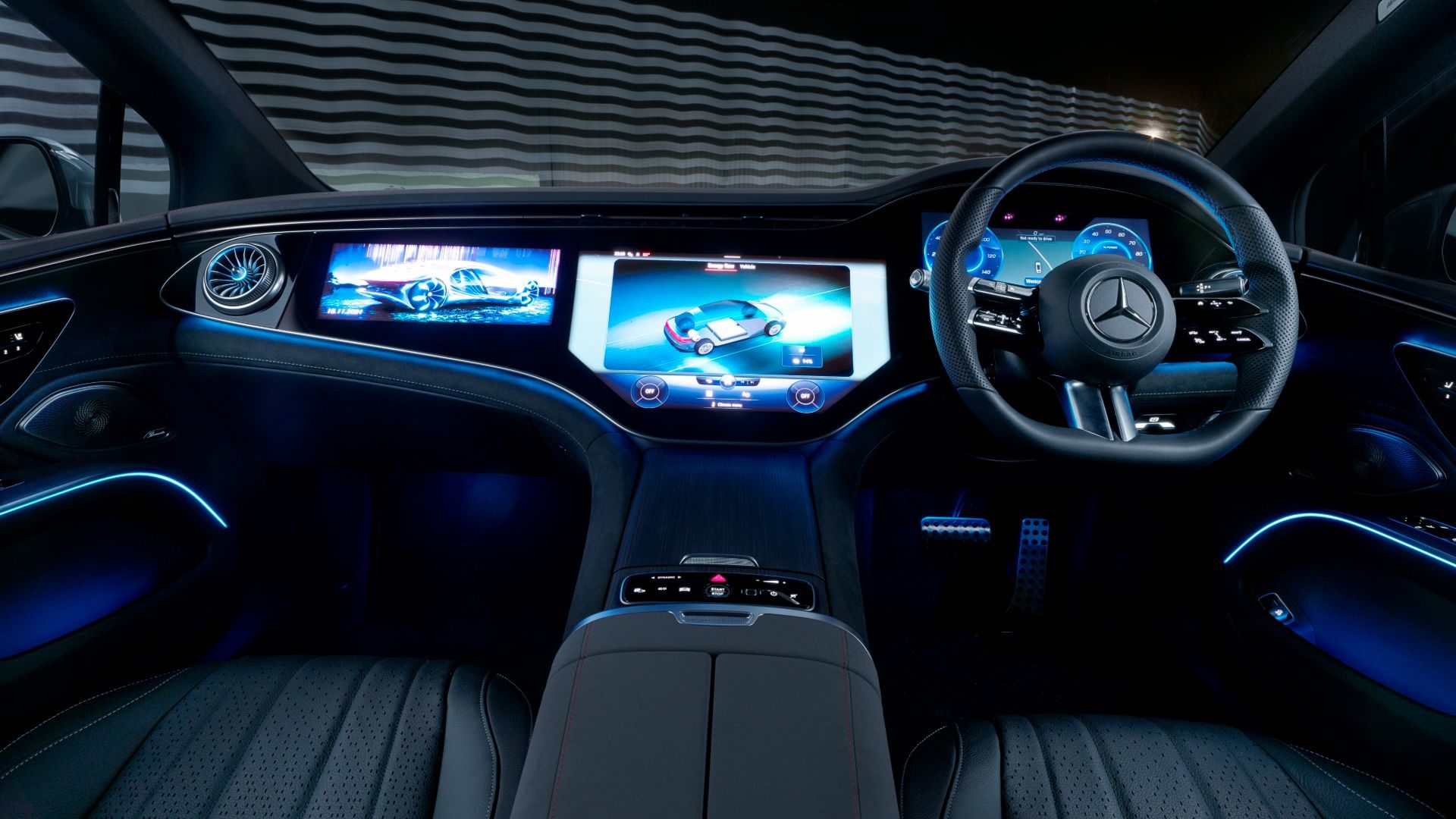
Inside, the EQS isn’t quite as commodious as an S-Class, but the high-net-worth individual in the back won’t feel short-changed. There are acres of legroom, pillowy-soft heated seats, 64 colours of ambient lighting and loads of gadgets to play with.
Speaking of gadgets, my car wasn’t supplied with the optional Hyperscreen (seen above), which costs a not-inconsiderable £7,995 and covers the entire dashboard with a panel of glass and three conjoined screens. In terms of wow-factor, it blows a Model S into the weeds (and let’s not even mention Tesla build quality), but the standard 12.8-inch MBUX touchscreen here offers most of the same functionality.
You unlock the media system using a PIN code or – like a new smartphone – via fingerprint or facial recognition. The EQS also employs some 350 sensors to monitor your every move. Reach for your bag on the passenger seat, for instance, and a spotlight illuminates to help you. Or simply glance at the passenger-side mirror to select it for adjustment.
It’s all very clever, although the touchpads on the steering wheel are fiddly and I soon deferred to Apple CarPlay for music and navigation.
Digital, not analogue
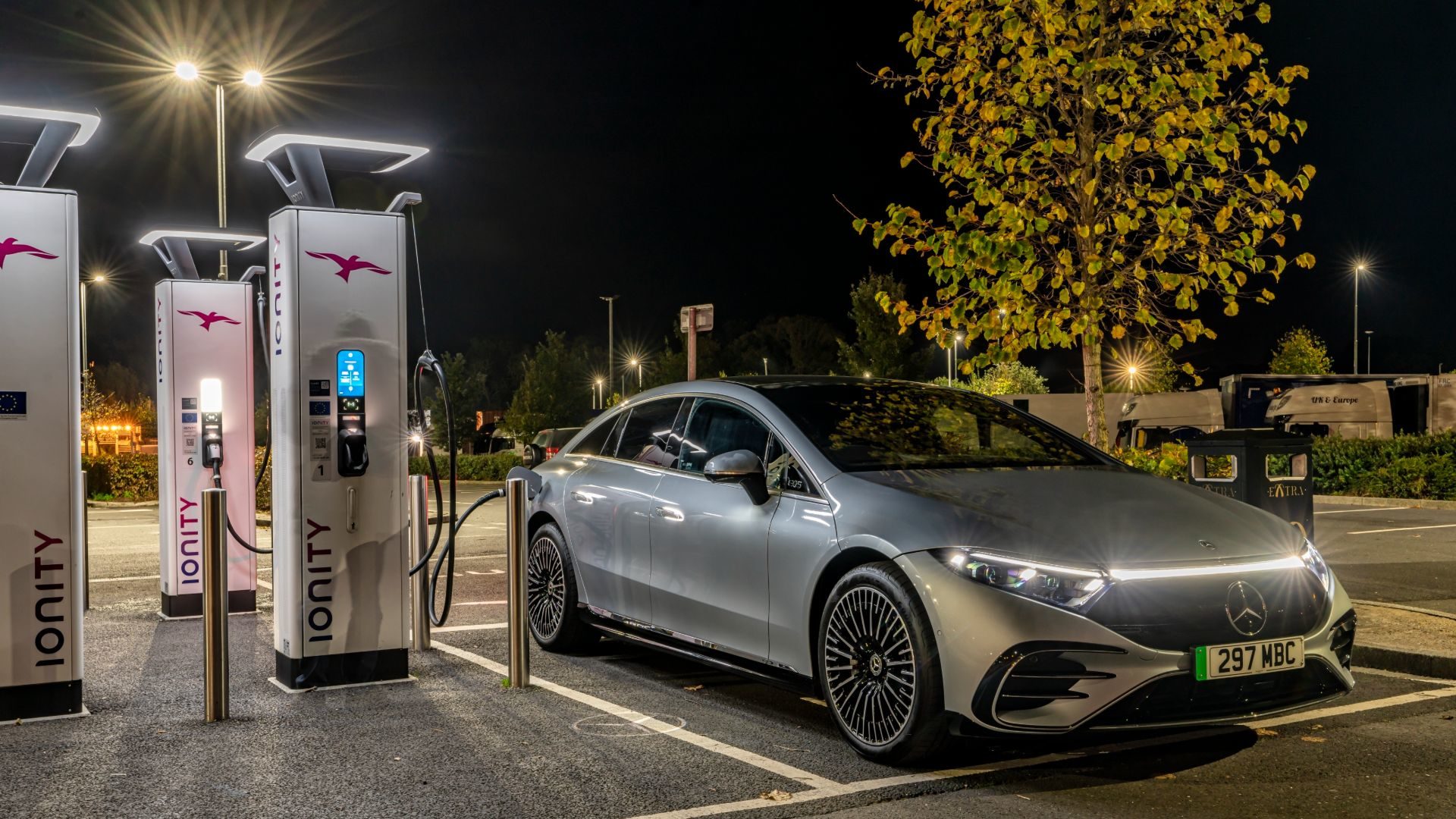
Even on huge 22-inch wheels, the air-sprung EQS rides like a true limousine. It glides over potholes and smothers speed humps, the sense of serenity enhanced by noise-cancelling tech.
Body control is good and traction feels immense, but don’t expect the EQS to steer or handle like a Porsche Taycan. This is a digital car, not an analogue one, and that’s reflected in a rather remote driving experience.
Electric power certainly suits a luxury vehicle, though; smooth, near-silent running and instant torque are exactly what you need for effortless progress. The EQS also proves less stressful in city driving than many of its contemporaries, with amazing surround-view cameras for parking, plus optional rear-wheel steering that swivels up to 10 degrees for a 10.9-metre turning circle – smaller than a Ford Fiesta.
Just as the S-Class has often been cited as the ‘best car in the world’, so the EQS lays a decent claim to being the best EV. It’s a car to admire, rather than fall in love with, but Mercedes-Benz came good in the end. Your move, Elon.
ALSO READ:
EV advice on Motoring Electric
Porsche Taycan Sport Turismo review
